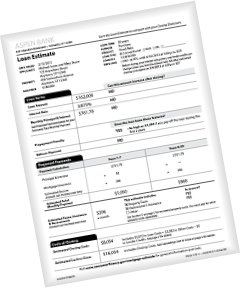
As a result of these sweeping changes, it is important for real estate agents and brokers to understand the new Loan Estimate and Closing Disclosure forms in order to ensure a smooth closing transaction for buyers and sellers. “It’s our duty as lenders and Realtors® to work together on behalf of our clients and manage their expectations as they move forward with buying or selling a home,” said Penny Reed, VP of settlement services, Wells Fargo.
The CFPB is implementing these changes to the closing procedure as required under the Real Estate Settlement and Procedures Act and Truth in Lending Act (RESPA-TILA). The purpose of these two new forms is to provide consumers with the information they need to understand the mortgage process upfront and help prevent surprises down the road or at closing.
New Loan Estimate Form (replaces TIL Disclosure and Good Faith Estimate)
Lenders must provide consumers with the Loan Estimate form within three business days of the mortgage application. The form highlights the financial details of the mortgage, closing costs and other regulatory requirements on a single form and in plain English making it easier for consumers to read and interpret.
By providing consumers with an estimate of the financial details regarding their loan and closing costs in advance gives them an opportunity to more easily compare other mortgage products and ensure they have a mortgage that they can afford to repay.
New Closing Disclosure Form (replaces the Final TIL-Disclosure and HUD-1 Settlement Statement)
In the past, many consumers often didn’t receive final closing disclosures until they were already at closing or just prior to it. To help prevent surprises and confusion at the closing table, lenders will be required to provide consumers with the new Closing Disclosure form at least three business days prior to the closing date.
The new form combines several confusing documents into an easy-to-read five-page form. It will be much simpler for consumers to compare their final loan terms and closing costs with the information that was originally provided to them on the Loan Estimate form.
Although these new disclosure procedures and documents are designed to prevent closing delays, the closing date could be impacted if the mortgage APR changes, a different mortgage product is chosen or if a prepayment penalty is added to the loan.

Kale Realty offers 100% commissions on all sales to brokers (minus a $350 fee). We’d be thrilled to add you to the team! You can schedule a call or meeting with D.J. by clicking here.
